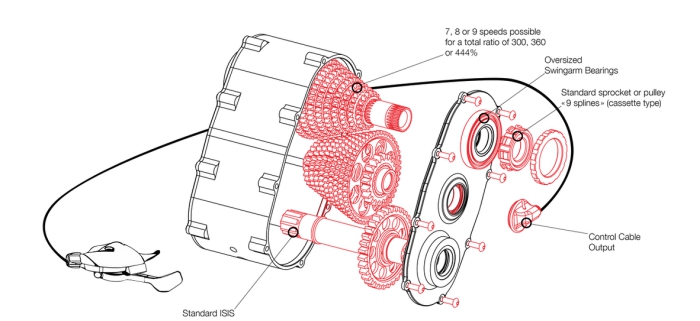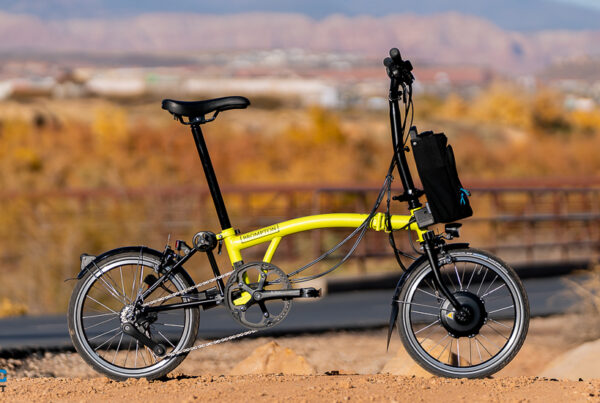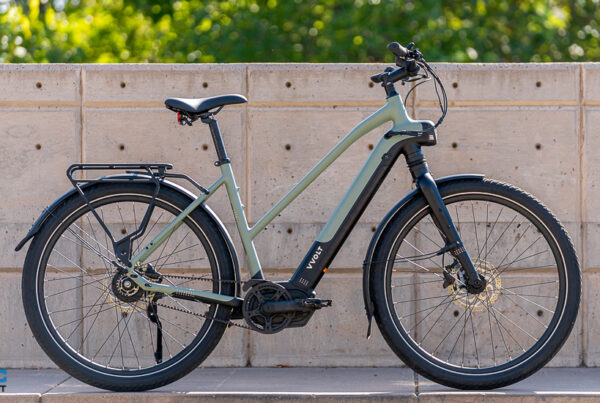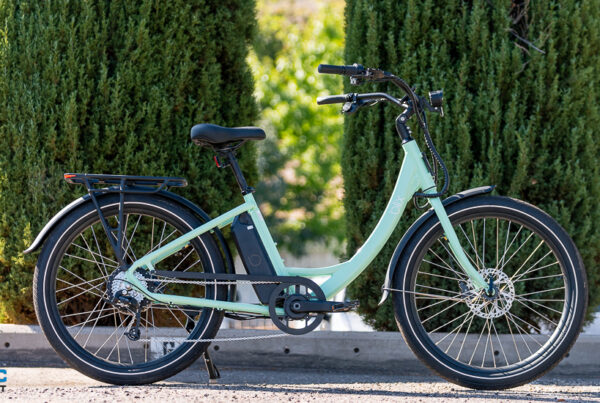There’s not a lot of information yet on this system, but it’s pretty interesting, so I’d still like to show what I found.
___________________________________________________
So far, about all I could find out is that it uses a 48V system (good, no wimpy 36V) and that it uses the Effigear transmission, so…let’s start with that.
The Effigear system is listed as being able to house from seven to nine gears, but since it’s weight and cost are already going to be an issue for a lightweight upscale mountain bike, I suspect the most popular version will be the 7-speed.
I mention mountain bikes because the configuration that typically would make this appealing to an upscale customer is someone who takes big jumps and hits rapid-fire moguls and berms. In that situation, it’s beneficial to make the rear wheel as light as possible, so that a sophisticated spring and damper can keep the tire in contact with the ground for every split-second that is possible. So, you move the weight of the gearing and shifter to the center of the frame…

If you’ve ever hit a hard bump and the rear swingarm was bounced up off of the ground, you can’t make effective inputs until the tire is touching the ground again. On a high-speed downhill run, a more effective suspension system can make the difference between an exhilarating “personal best” run, or a crash.
As you can see from the pictures above, the Effigear uses constant-mesh gears, similar to a cars manual transmission. Systems like this are sealed in a housing and run in an oil-bath. This means the transmission should last a very long time, even if the rider uses it for frequent aggressive downhill runs.

Of course I was curious how the shifter worked, and it uses a sliding gear selector that runs down the center of the primary gear-shaft. When you stop it at a certain gear selection, three radial “dogs” are lifted outwards, which is very similar to the well-known “Internal Gear Hub” (IGH) like the Nexus or Sturmey-Archer. The dogs connect the shaft to the particular gear-set you want.
In this way, all of the gears are always spinning and meshing, but the input shaft is not connected to any of the seven gears until a certain gears’ dogs are lifted. If such a system is well-designed and uses quality materials, it can be surprisingly strong. If you want to see more illustrations of a dog-actuated system, check out our article on IGH’s by clicking here.

Im sure that most of the companies offering the Valeo drive on one of their frames has a chain as an option, but since this is going to be an upscale-priced product, most of the PR pics on the web show it with a Gates belt-drive. Although belts are more expensive to replace, they typically last three times longer. One performance benefit is that they squeeze-out the snow, mud, and debris that might clog a derailleur. To be fair, a belt and pulley can still get jammed-up, but…just not as often as a chain.
___________________________________________________
Valeo in France
Of course I was curious about the other things that Valeo might be developing, and they have done some work on mild-hybrid car designs. They don’t make cars, but hope to market add-on systems to increase fuel economy and reduce emissions.

In Valeos version of a mild-hybrid system, a booster motor helps the car accelerate, which is the time when a gasoline engine is loaded the heaviest. When simply cruising along at a stable speed, gasoline engines (and especially diesel engines) can provide decent fuel economy and fairly low emissions. By only adding a booster motor, the motor doesn’t need to be very large, and the system doesn’t need a huge amount of watts. Also, the battery pack for a system like this does not need to be large or heavy.
For several years now, European auto manufacturers have been toying with the idea of raising the cars electrical system voltage to 48V. Doing this would allow the starter motor to be smaller and lighter, along ith several other benefits. In anticipation of this, the Valeo mild hybrid designs all use 48V, so far.

Their most ambitious project involved making the booster motor larger and more integrated into the drivetrain. Although it is not powerful enough at its modest size (and using only 48V) to be the full-time power-lant at highway speeds, it is powerful enough to have an “electric only” range of 200 kilometers when driving at at city speeds. This was demonstrated in a small light commuter car, to cross all the way through Paris.
___________________________________________________
The Effigear transmission has been around for a while on pedal-only bicycles, but Valeo is the first to engineer a motor with it into an integrated housing.

From the outside, the housing “suggests” that the motor has a reduction gear to allow it to spin at higher RPM’s than the driven pedal-shaft of the bike. This is good, and it allows a motor to run cooler while converting fewer of the batteries watts into waste-heat. It also appears to drive the pedal shaft (no doubt, through a one-way clutch-bearing). If that is true, its good because it gives the motor the use of the seven gears, and that provides great wheel-power from the smallest possible motor.
Of course the downside is that the transmission is loaded by the motor when power is applied. There are two IGH’s that are well-known to take a severe beating and survive, the similar 3-speeds from Nexus and Sturmey, and the 14-speed Rohloff 2X7. The 3-speeds accomplish their robust performance with beefy dogs, and the Rohloff accomplishes it with the strongest possible materials combined with a shear pin, so…the easily-replaced pin breaks before the gears or dogs.

I suspect the transmission from Effigear has been designed and manufactured with materials that will stand up to a motor driving it (instead of just two wimpy 200W human legs), but….only time will tell.
___________________________________________________
Written by Ron/spinningmagnets December 2020
Source link








